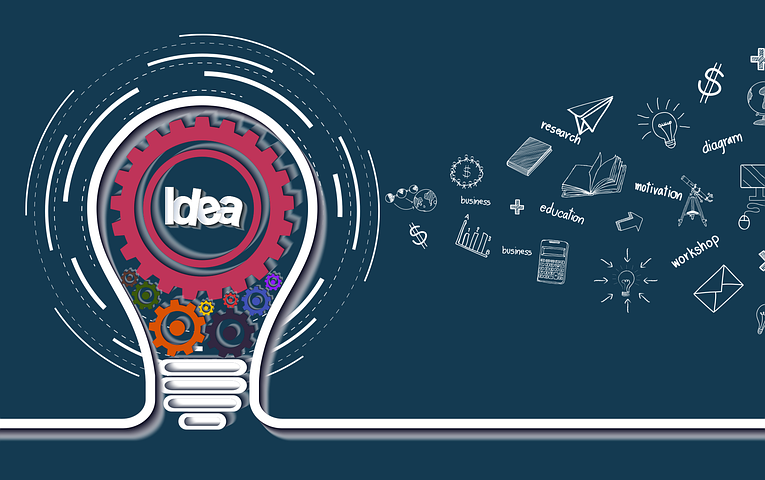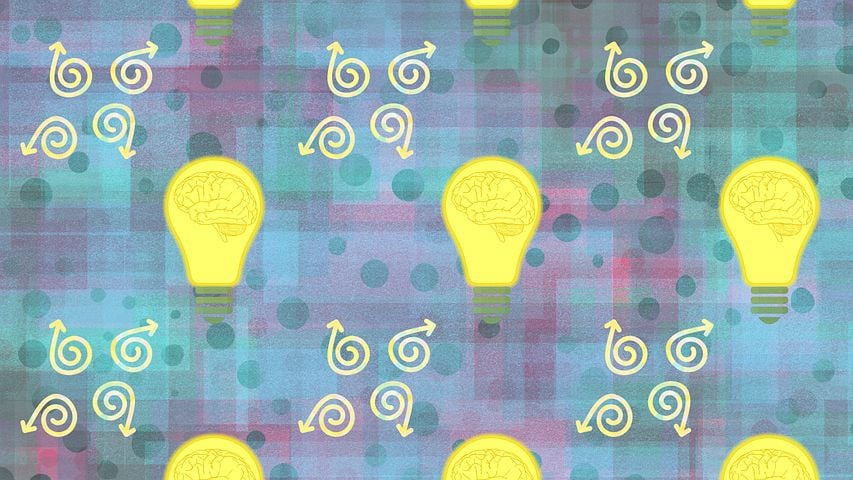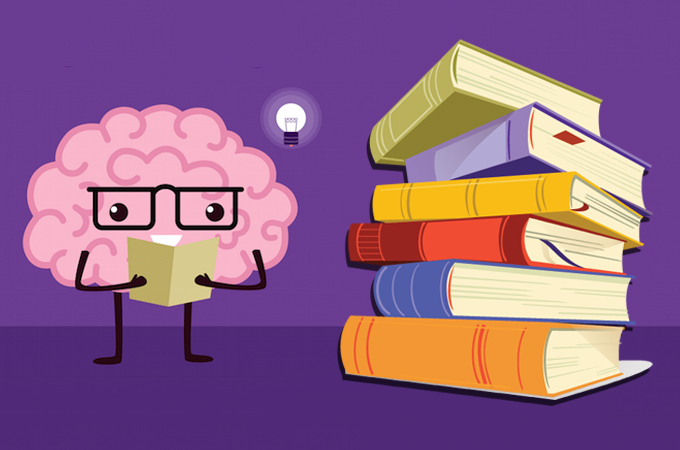Mastering Memory Techniques: Boosting Your Brainpower

Memory Techniques Introduction
As we go through life, we are constantly bombarded with new information and experiences. Unfortunately, our memory capacity is not unlimited, and it can be easy to forget important details. However, by mastering a few simple memory techniques, you can boost your brainpower and improve your ability to recall information.
In this blog post, we will explore different types of memory techniques, including mnemonic devices, visualization techniques, repetition and rehearsal, and other memory techniques. We will also provide tips on how to incorporate these techniques into your daily routine, so you can start boosting your brainpower today.
Mnemonic Devices
Explanation of mnemonic devices
Mnemonic devices are memory aids that use a specific pattern of letters, ideas, or associations to help you remember information. Mnemonic devices can help to encode and organize information in a way that makes it more memorable. They are often used to remember lists, facts, or complex information, and can be particularly helpful for remembering information that is difficult to visualize or that doesn’t have a logical or meaningful structure.
Some common types of mnemonic devices include acrostics, rhymes, acronyms, and visual imagery. Mnemonic devices are a proven memory aid and can be a great tool to help you remember information more efficiently.
Examples of mnemonic devices
Some examples of mnemonic devices include:
- Acronyms: Using the first letter of each word in a phrase to create a new word or phrase that is easier to remember. For example, HOMES is a mnemonic device used to remember the Great Lakes (Huron, Ontario, Michigan, Erie, Superior)
- Rhymes: Using a phrase or sentence that rhymes to help you remember information. For example, “Every good boy does fine” to remember the musical notes E, G, B, D, and F on the lines of a treble clef.
- Visualization: Using mental images to help you remember information. For example, picturing a giant apple to help you remember the word “apple.”
- Acrostics: Creating a word or phrase using the first letter of a list of words you want to remember. For example, “My very eager mother just served us nine pizzas” to remember the order of the planets in the solar system (Mercury, Venus, Earth, Mars, Jupiter, Saturn, Uranus, Neptune, and Pluto)
- Method of Loci: This is a memory technique that uses visualization to link new information to familiar places. For example, imagine a shopping list in which you need to buy milk, bread, and eggs. You can imagine these items placed in different rooms of your house, like milk in the kitchen, bread in the living room, and eggs in the bathroom, this way you can link the information to a familiar place and make it easier to recall.
These are just a few examples of mnemonic devices, there are many more possibilities. Mnemonic devices can be tailored to the individual and the information that needs to be remembered.
How to create your own mnemonic devices
Creating your own mnemonic devices can be a fun and effective way to boost your brainpower. Here are a few tips on how to create your own mnemonic devices:
- Identify the information you need to remember: The first step in creating a mnemonic device is to identify the information that you need to remember. This could be a list of items, a string of numbers, or a set of facts.
- Break down the information into smaller chunks: Break down the information into smaller chunks that are easier to remember. This can make it easier to create a mnemonic device that is tailored to the information you need to remember.
- Use associations: Make connections between the information you need to remember and something that you already know. This can be a word, an image, or a concept that you are already familiar with.
- Use humor or puns: Using humor or puns can make the mnemonic device more memorable. This can be especially effective for remembering lists or sets of facts.
- Practice and repeat: Practice using your mnemonic device and repeat it as often as possible. The more you use it, the more effective it will become.
- Be creative: There are many different types of mnemonic devices, so don’t be afraid to think outside the box and be creative with your mnemonic device.
Remember that mnemonic devices are not a one-size-fits-all solution, it’s important to experiment and find the one that works best for you. It may take some time to find the right mnemonic device for you, but with practice and patience, you’ll be able to remember information more efficiently.
Visualization Techniques

Explanation of visualization techniques
Visualization techniques involve creating a mental image of the information you are trying to remember. These techniques rely on the idea that the brain can remember visual information more easily than abstract information. By creating mental images, visualization techniques can help to link new information to something that is already familiar, making it easier to recall. Some examples of visualization techniques include:
- Mental imagery: This involves creating a mental image of the information you are trying to remember. This can be helpful for remembering names, faces, or places.
- Mind mapping: This is a visual representation of related ideas, facts, or concepts. This can be helpful for organizing information and remembering it later.
- Storytelling: This involves creating a story that links the information you need to remember together. This can be helpful for remembering lists or sequences of information.
Visualization techniques can be particularly effective for people who are visual learners, meaning that they learn and remember information better when it is presented visually. However, these techniques can be used by anyone, regardless of their learning style, as it is a way of creating a mental image of the information to be remembered.
It’s important to practice visualization techniques, as the more you use them, the more effective they will become. Try to come up with a unique visualization technique that will help you remember the information you need, and practice it regularly.
Examples of visualization techniques
Some examples of visualization techniques include:
- Creating a mental image of the person or place you are trying to remember. For example, if you are trying to remember a new acquaintance’s name, try to picture their face in your mind and associate their name with their face.
- Creating a mental image of an action or event. For example, if you are trying to remember a list of items to buy at the grocery store, try to imagine yourself walking through the store and picking up each item.
- Mind mapping: creating a visual map of related ideas, facts, or concepts. This can be helpful for organizing information and remembering it later.
- Storytelling: creating a story that links the information you need to remember together. This can be helpful for remembering lists or sequences of information.
- Using flashcards: This is a popular technique for memorizing information, especially for students. You can use flashcards to write down important information and visualize it by creating a connection with an image or a symbol.
- Using a Memory Palace: This is a technique that involves using visualization to link new information to familiar places. For example, imagine a shopping list in which you need to buy milk, bread, and eggs. You can imagine these items placed in different rooms of your house, like milk in the kitchen, bread in the living room, and eggs in the bathroom.
These are just a few examples of visualization techniques, there are many more possibilities. The key is to find the one that works best for you and practice it regularly. Remember that visualization is a skill that can be developed and improved with practice, so don’t be discouraged if it takes some time to get the hang of it.
How to create your own visualization techniques
Creating your own visualization techniques can be a powerful way to boost your brainpower. Here are a few tips on how to create your own visualization techniques:
- Identify the information you need to remember: The first step in creating a visualization technique is to identify the information that you need to remember. This could be a list of items, a string of numbers, or a set of facts.
- Create a mental image: Try to create a mental image of the information you need to remember. This could be a picture, a scene, or even a story. The more vivid and detailed the mental image, the more effective the visualization technique will be.
- Use association: Try to associate the information you need to remember with something that you already know. This could be a word, an image, or a concept that you are already familiar with.
- Practice and repeat: Practice using your visualization technique and repeat it as often as possible. The more you use it, the more effective it will become.
- Be creative: There are many different types of visualization techniques, so don’t be afraid to think outside the box and be creative with your visualization technique.
- Use different senses: Visualization is not only about creating visual images, but also about involving other senses such as sound, touch, and smell. This can make the mental image more vivid and easier to recall.
Remember that visualization techniques are not a one-size-fits-all solution, it’s important to experiment and find the one that works best for you. It may take some time to find the right visualization technique for you, but with practice and patience, you’ll be able to remember information more efficiently.
Repetition and Rehearsal

Explanation of repetition and rehearsal
Repetition and rehearsal are memory techniques that involve repeating and practicing information in order to fix it in your memory. These techniques are based on the idea that the more you encounter and practice something, the more likely you are to remember it.
Repetition is the act of repeating information multiple times in order to fix it in your memory. This can be done by repeating information out loud, writing it down, or reviewing flashcards. Repetition is particularly effective for remembering lists, numbers, or other types of information that you need to recall quickly.
Rehearsal is the act of practicing recalling information before you need to use it. This can be done by practicing giving a speech, reciting a poem, or reviewing flashcards. Rehearsal is particularly effective for remembering information that you will need to use later, such as a presentation or a test.
Both repetition and rehearsal can be used together to help you remember information more effectively. By incorporating repetition and rehearsal into your daily routine, you can improve your memory and boost your brainpower.
It’s important to note that repetition and rehearsal are not a substitute for understanding the material, they help to fix it in your memory so you can access it when needed.
How to use repetition and rehearsal to improve memory
Here are a few tips on how to use repetition and rehearsal to improve memory:
- Break down the information into smaller chunks: Break down the information into smaller chunks that are easier to remember. This can make it easier to use repetition and rehearsal techniques that are tailored to the information you need to remember.
- Repeat information out loud: Saying information out loud can help to fix it in your memory. Try repeating phone numbers, addresses, or important dates out loud several times to help remember them.
- Write information down: Writing information down can also help to fix it in your memory. Try writing down important information such as lists, notes, or appointments and reviewing them regularly.
- Rehearse information: Rehearsing information can also help to fix it in your memory. Try practicing recalling information such as a speech or presentation before giving it.
- Practice regularly: The key to using repetition and rehearsal to improve memory is to practice regularly. Try to incorporate repetition and rehearsal into your daily routine to help fix the information in your memory.
- Use flashcards: Flashcards are a great tool for practicing repetition and rehearsal. You can use flashcards to write down important information and practice recalling it regularly.
- Use spaced repetition: This is a technique where you practice recalling the information at increasing intervals of time, this way the information is reinforced into your memory every time you recall it.
- Use different ways of practicing: Alternating between different ways of practicing such as writing, speaking, drawing or listening can help to reinforce the information and make it more effective.
Remember that repetition and rehearsal are not a substitute for understanding the material, they help to fix it in your memory so you can access it when needed.
Tips for incorporating repetition and rehearsal into your daily routine
Here are a few tips for incorporating repetition and rehearsal into your daily routine:
- Set aside dedicated practice time: Set aside specific times of the day to practice repetition and rehearsal. For example, you could practice repeating phone numbers or addresses in the morning and review flashcards in the evening.
- Make use of idle time: Incorporate repetition and rehearsal into your idle time such as when you are commuting, waiting in line or doing household chores. You can repeat information out loud, review flashcards, or practice recalling information.
- Incorporate repetition and rehearsal into your daily activities: Try to incorporate repetition and rehearsal into your daily activities, such as reviewing flashcards while cooking or rehearsing a speech while taking a shower.
- Use technology to help you: There are many apps and tools available that can help you practice repetition and rehearsal. For example, you can use flashcard apps to review information on the go, or you can use a speech practice app to rehearse a presentation.
- Make use of social support: Make use of social support to help you incorporate repetition and rehearsal into your daily routine. You can study with a friend, form a study group, or even use online forums to share information and practice recalling it.
- Be consistent: Incorporating repetition and rehearsal into your daily routine is all about consistency. Try to practice regularly, even if it’s just for a few minutes at a time.
- Be patient: It takes time to improve memory, so be patient with yourself and stick to your routine. With practice and patience, you’ll find that repetition and rehearsal become second nature and you’ll be able to remember information more efficiently.
Other Memory Techniques

Chunking
Chunking is a memory technique that involves breaking down information into smaller, manageable chunks in order to make it easier to remember. This technique is based on the idea that the human brain can process and remember smaller pieces of information more easily than larger chunks of information.
Chunking can be applied to a variety of different types of information, such as numbers, words, or concepts. For example, if you need to remember a long string of numbers, you can break it down into smaller chunks, such as groups of three or four numbers. This makes it easier to remember the numbers as a whole.
Chunking can also be used to remember lists of items, by grouping them into categories or creating a mental image that connects the items together.
This technique is particularly useful for remembering information that is otherwise difficult to recall, like phone numbers, addresses, or long lists of items, and can also be applied to learning new information, by breaking it down into smaller chunks that are easier to absorb.
Chunking can also be used in combination with other memory techniques, such as mnemonic devices, visualization, and repetition, to make the information even more memorable.
Association
Association is a memory technique that involves connecting new information to something that is already familiar to you, making it easier to remember. This technique is based on the idea that the brain can remember information better when it is associated with something that is already familiar to you.
There are several ways to use association to improve your memory, such as:
- Using imagery: Creating a mental image of the new information and associating it with something familiar, such as a person, place, or object.
- Making connections: Finding connections between new information and something you already know. For example, if you are trying to remember a new word, you can associate it with a word you already know that is similar in meaning.
- Using rhymes and songs: Associating new information with a rhyme or song can make it easier to remember. For example, you can use a rhyme to remember a phone number or a song to remember a list of items.
- Using Acronyms: Creating an acronym from the first letter of each item you want to remember can be helpful. For example, HOMES is an acronym that can be used to remember the Great Lakes (Huron, Ontario, Michigan, Erie, Superior)
- Using mnemonic devices: Mnemonic devices use associations between new information and something familiar. For example, the phrase “Please Excuse My Dear Aunt Sally” can be used to remember the order of mathematical operations (Parentheses, Exponents, Multiplication, Division, Addition, Subtraction)
Association is a versatile memory technique that can be used to remember a wide range of information, from lists of items to complex concepts. By using association to connect new information to something that is already familiar to you, you can improve your memory and make it easier to recall information when you need it.
Elaboration
Elaboration is a memory technique that involves adding more detail and meaning to new information in order to make it more memorable. This technique is based on the idea that the more meaning and context we attach to new information, the more likely we are to remember it.
There are several ways to use elaboration to improve your memory, such as:
- Connecting new information to existing knowledge: Try to connect new information to something you already know, such as linking a new word to a similar word you already know.
- Creating a mental image: Try to create a mental image of the new information, such as visualizing a new word or concept.
- Adding personal relevance: Try to relate new information to something that is personally relevant to you, such as relating a new concept to an experience you have had.
- Creating a story: Try to create a story or narrative around the new information, such as linking a list of items to a story or a journey.
- Creating an analogy: Try to create an analogy or comparison between new information and something familiar, such as comparing a new concept to something you already know.
- Creating a song or a rhyme: Try to create a song or a rhyme to link the new information together, this way it can make it more memorable.
By adding more detail and meaning to new information, elaboration can help to make the information more memorable and easier to recall. This technique can be used to remember a wide range of information, from lists of items to complex concepts. It’s important to note that elaboration is not a substitute for understanding the material, but it helps to make it more memorable by attaching more meaning to it.
Mind Mapping
Mind mapping is a technique used to organize and structure information, by creating a visual diagram that connects ideas and concepts together. This technique is based on the idea that the human brain can process and remember information more easily when it is presented in a visual format.
A mind map typically starts with a central idea or concept, represented in the center of the diagram, and then branches out to related ideas and sub-topics. Each branch can be further divided into smaller branches, creating a hierarchical structure that helps to organize the information.
Mind mapping can be used for a wide range of purposes, such as:
- Taking notes: Mind mapping is a useful technique for organizing and structuring notes, by connecting related ideas and concepts together.
- Planning and brainstorming: Mind mapping can be used to generate ideas and plan projects, by visually organizing and connecting related concepts.
- Studying and learning: Mind mapping can be used to organize and structure information, making it easier to understand and remember.
- Problem-solving: Mind mapping can be used to analyze a problem and identify potential solutions, by connecting related concepts and ideas.
Mind mapping can be done by hand using pen and paper, or by using a mind mapping software. There are many tools available, some of them are free and others are paid. Mind mapping helps to improve memory, increase productivity, and facilitate understanding of complex information. It’s a great technique to use for organizing and structuring information, and for making connections between related concepts and ideas.
How to choose the best memory technique for you

Choosing the best memory technique for you depends on several factors, such as:
- The type of information you need to remember: Different types of information, such as numbers, words, or concepts, may require different memory techniques. For example, mnemonic devices may be more effective for remembering lists of words, while visualization may be more effective for remembering concepts.
- Your learning style: Different people have different learning styles, and what works for one person may not work for another. Some people may find that visual techniques work best for them, while others may prefer techniques that involve repetition or association.
- The amount of time you have: Some memory techniques, such as elaboration, may require more time to set up and practice than others, such as repetition.
- Your personal preferences: Some people may find certain memory techniques more enjoyable or easier to use than others. It’s important to choose a memory technique that you enjoy and that you are motivated to use.
Here are a few tips to help you choose the best memory technique for you:
- Try different techniques: Experiment with different memory techniques to find out which one works best for you.
- Combine techniques: Combining different memory techniques can also be effective. For example, you can use visualization to remember a concept, and then use repetition to reinforce it.
- Adapt techniques to suit your needs: Memory techniques can be adapted to suit your needs. For example, you can use mnemonic devices to remember a list of items, and then use elaboration to add more detail and meaning to the items.
- Keep track of your progress: Keep track of your progress and make adjustments as necessary. If a technique isn’t working for you, try a different one.
Ultimately, the best memory technique for you is the one that you find most effective, most enjoyable and that you are motivated to use. It’s important to keep in mind that memory techniques are not a substitute for understanding the material, but they can help to make the information more memorable and easier to recall.
Memory Techniques Conclusion
In conclusion, memory loss is a common concern that affects many people. However, there are several memory techniques that can be used to improve memory and boost brainpower. From mnemonics to visualization, repetition to elaboration and mind mapping, these techniques can help to make information more memorable and easier to recall. It is important to try different techniques and find which one works best for you and fits your style, and to combine them if necessary.
Additionally, it is important to keep in mind that memory techniques are not a substitute for understanding the material, but they can help to make the information more memorable and easier to recall. With practice and patience, you can improve your memory and boost your brainpower.
Summary
Here is a summary of the key points discussed in this article:
- Memory loss is a common concern that affects many people.
- There are several memory techniques that can be used to improve memory and boost brainpower.
- Techniques such as mnemonics, visualization, repetition, elaboration and mind mapping can help to make information more memorable and easier to recall.
- It is important to try different techniques and find which one works best for you and fits your style.
- Combining techniques can also be effective.
- Memory techniques are not a substitute for understanding the material, but they can help to make the information more memorable and easier to recall.
- With practice and patience, you can improve your memory and boost your brainpower.
- It’s important to keep track of your progress and make adjustments as necessary.
Additional Resources
Here are some additional resources for improving memory:
- Websites:
- Memory Improvement Tips: https://www.memory-improvement-tips.com/
- Memory Loss and Aging: https://www.helpguide.org/articles/memory-loss/memory-loss-and-aging.htm
- Memory Techniques: https://www.mindtools.com/pages/article/newMN_09.htm
- Books:
- “Make It Stick: The Science of Successful Learning” by Peter C. Brown, Henry L. Roediger III, and Mark A. McDaniel *Buy on Amazon Here
- “The Memory Book: The Classic Guide to Improving Your Memory at Work, at School, and at Play” by Harry Lorayne and Jerry Lucas *Buy on Amazon Here
- “Moonwalking with Einstein: The Art and Science of Remembering Everything” by Joshua Foer *Buy on Amazon Here
- Apps:
- Elevate: Brain Training: https://www.elevateapp.com/
- Memrise: Learn New Languages, Grammar & Vocab: https://www.memrise.com/
- Lumosity: Brain Training: https://www.lumosity.com/
It’s important to note that these resources should be used as an addition to your practice and not as a substitute. It’s also important to consult a doctor before starting any new memory improvement program specially if you are suffering from any medical condition.
Frequently Asked Questions
Q. What are some common causes of memory loss?
A. Memory loss can be caused by a variety of factors, including aging, certain medical conditions, medications, stress, lack of sleep, and poor nutrition. Some of the most common causes of memory loss include age-related memory loss, dementia, traumatic brain injury, and depression.
Q. What are some effective memory techniques?
A. There are several memory techniques that can be used to improve memory and boost brainpower. Some of the most effective techniques include mnemonics, visualization, repetition, elaboration and mind mapping. These techniques can help to make information more memorable and easier to recall.
Q. Are there any lifestyle changes that can help to improve memory?
A. Yes, there are several lifestyle changes that can help to improve memory. Eating a brain-healthy diet, getting enough sleep, reducing stress, and staying physically active can all help to improve memory. Additionally, memory exercises and activities, memory supplements and medications, and memory therapy can also be helpful in improving memory.



